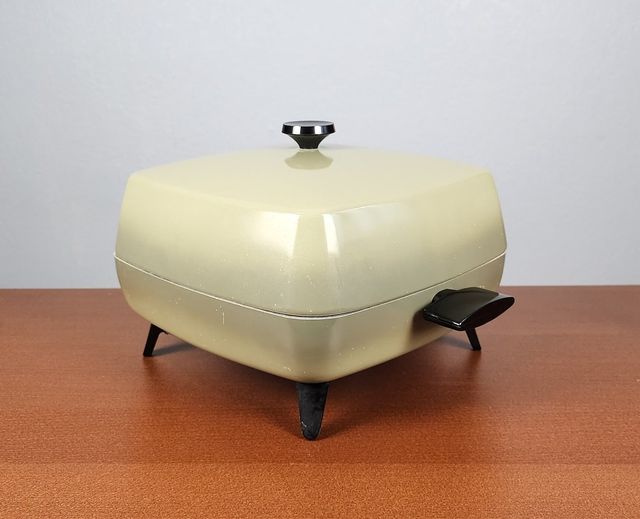The vintage nonstick electric skillet, a staple in mid-20th century kitchens, represents a significant evolution in culinary technology. These skillets not only revolutionized cooking methods but also introduced a new level of convenience and efficiency to everyday meal preparation.
History of Nonstick Electric Skillets
Early Innovations in Electric Cookware
Electric cooking appliances began gaining popularity in the early 20th century. The electric skillet emerged as a versatile tool, combining the convenience of electric heating with the familiarity of a traditional skillet. Early models were made of cast iron or aluminum and were manually controlled.
Introduction of Nonstick Surfaces
The 1950s saw the introduction of nonstick coatings, most notably Teflon. This innovation drastically reduced the need for cooking oils and made cleaning much easier. Electric skillets quickly adopted this technology, offering home cooks a more efficient and user-friendly option. By the 1960s and 1970s, nonstick electric skillets had become a common fixture in American households.
Usage of Nonstick Electric Skillets
Everyday Cooking
Vintage nonstick electric skillets were incredibly versatile, suitable for frying, sautéing, simmering, and even baking. Their adjustable temperature controls allowed precise cooking, making them ideal for a wide range of recipes. From breakfast pancakes to dinner stir-fries, these skillets handled it all with ease.
Entertaining and Buffet Serving
The electric skillet’s portability and consistent heating made it perfect for buffet-style serving at parties and family gatherings. Many models came with detachable cords, making them easy to transport and use directly on the dining table, keeping food warm throughout the meal.
Healthier Cooking
The nonstick surface reduced the need for excessive cooking fats, promoting healthier cooking practices. This feature appealed to the health-conscious consumers of the 1960s and 1970s, aligning with the growing awareness of diet and nutrition.
Legacy of Nonstick Electric Skillets
Cultural Impact
The vintage nonstick electric skillet reflects a period of culinary innovation and changing domestic lifestyles. It symbolizes the post-war era’s focus on convenience and efficiency, catering to the needs of busy families and working parents.
Collectible Value
Today, vintage nonstick electric skillets are cherished by collectors and cooking enthusiasts. They are admired for their retro design, durable construction, and practical functionality. Models from renowned brands like Sunbeam, Presto, and West Bend often fetch high prices in antique shops and online marketplaces.
Influence on Modern Cookware
The success and popularity of vintage nonstick electric skillets paved the way for modern electric cooking appliances. Contemporary electric skillets and griddles still draw inspiration from their vintage predecessors, incorporating advanced features like digital temperature controls and improved nonstick coatings.
The vintage nonstick electric skillet stands as a testament to mid-20th century innovation in kitchen appliances. Its history, versatility, and lasting impact highlight the significant advancements in home cooking technology. Whether used for their intended culinary purposes or collected as nostalgic artifacts, these skillets continue to be celebrated for their role in shaping modern cooking practices.
